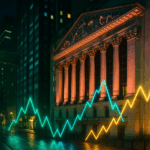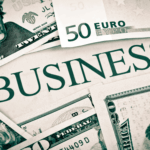Business and consumer behavior in the United States has shifted as new tariff policies have encouraged early purchasing. Recent trends show companies and individuals stockpiling inventories and high-cost electronics ahead of potential changes in tariff levels. This renewed activity raises questions about whether current economic output accurately reflects sustainable demand or is merely a temporary response to fiscal uncertainty. Added observations suggest that market adjustments and cautious decision-making may influence how these patterns develop over the coming months.
Will increased buying impact business inventories?
Do tariff changes affect consumer behavior?
Reports from various sources indicate that similar preemptive purchasing patterns were observed when tariff announcements loomed in earlier periods. Other analyses have noted that industries such as automotive and electronics experienced a surge in inventory buildup ahead of tariff revisions. This overlap in information reinforces current interpretations of market behavior under policy uncertainty.
Austan Goolsbee, President of the Federal Reserve Bank of Chicago, explained that businesses have been ordering enough to cover inventory needs for 60 to 90 days due to emerging uncertainties.
That kind of preemptive purchasing is probably even more pronounced on the business side. We heard a lot about preemptive building-up of inventories that could last 60 days, 90 days, if there was going to be more uncertainty.
Such measures suggest companies act swiftly to mitigate risks associated with tariff alterations.
Goolsbee also pointed out the risk of temporarily inflated economic activity caused by early purchases.
Activity might look artificially high in the initial, and then by the summer, might fall off — because people have bought it all.
This viewpoint highlights the potential for a spike followed by a subsequent drop as deferred spending occurs later.
Industries like the automotive sector are expected to build significant inventories while consumer demand for costly electronics surges. The CBS interview on “Face the Nation” captured such trends, emphasizing the anticipatory measures taken across market sectors. These developments clearly illustrate the immediate reaction to fiscal adjustments.
Tariff policies, temporarily frozen by President Donald Trump for products from select countries at a 10% rate until July 9, contribute further to prevailing uncertainty.
We don’t know, 90 days from now, when they’ve revisited the tariffs, we don’t know how big they’re going to be.
The unclear policy horizon has compelled both businesses and consumers to act with caution during this period.
Tom Priore, President of Priority, discussed the challenges facing small and medium-sized businesses under these conditions.
The uncertainty today will be reconciled and cleaned up. Our mission is to provide that flexible financial tool set … it doesn’t matter what environment you’re in. Accelerating cash flow and optimizing working capital are always good things.
His remarks underscore concerns over cash flow management and employment retention in a volatile market environment.
Market signals suggest a pattern of temporary economic boosts driven by preemptive buying, with possible slowdowns once the stockpiling ceases. Assessing inventory trends and consumer spending, readers should consider how these activities might affect long-term economic stability. Monitoring indicators such as employment levels and credit delinquencies remains vital for understanding future market dynamics.









